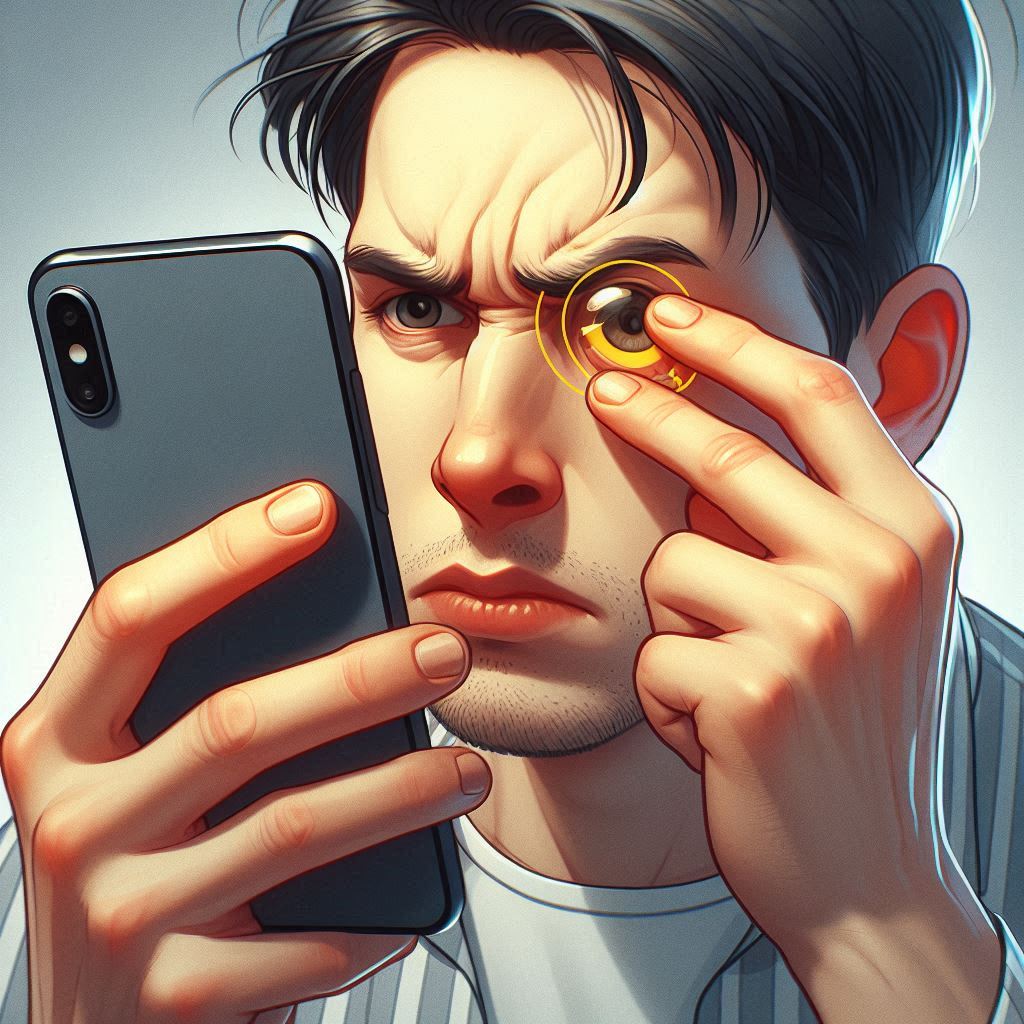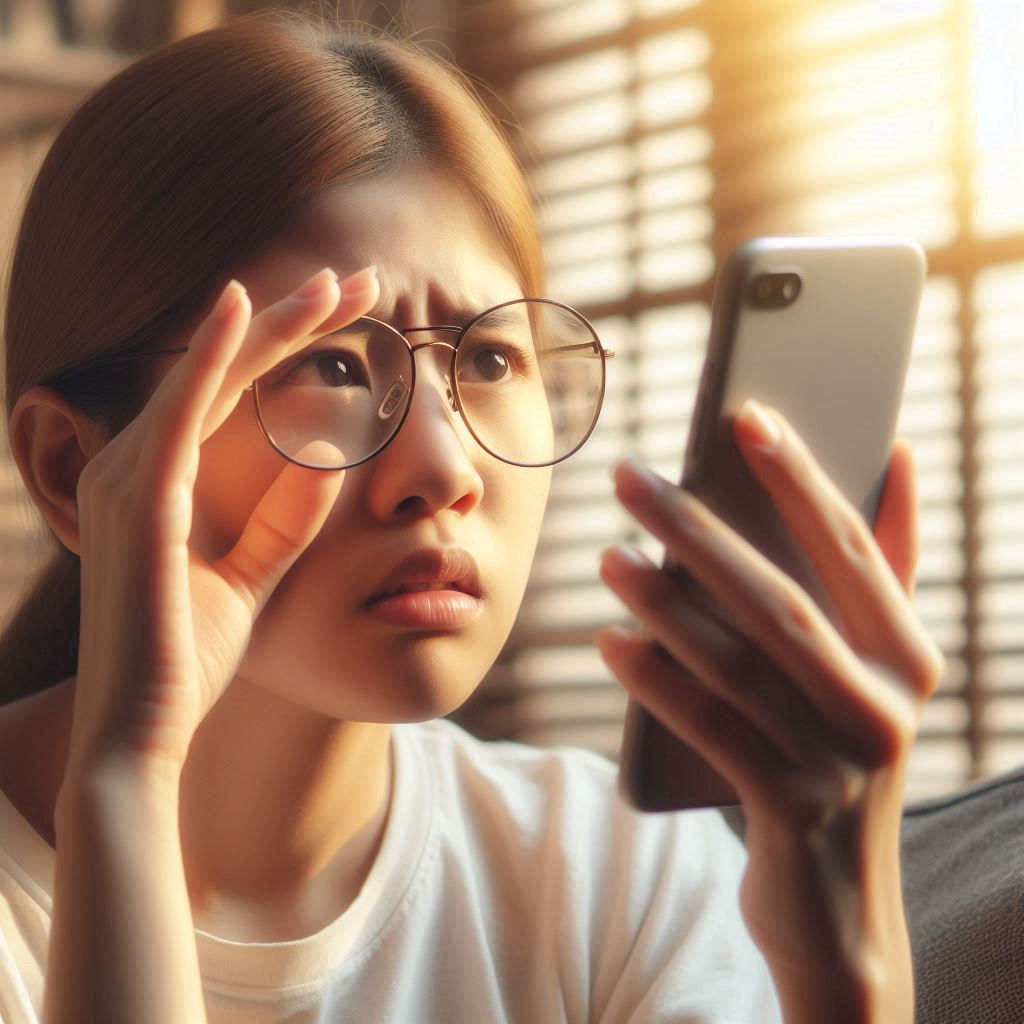
Ever notice you have to hold your phone farther and farther away to read the screen? That’s a common sign of presbyopia, a normal age-related change in your vision that makes focusing on close objects challenging.
This blog will help you understand what presbyopia is, why it happens around age 40, and the different ways you can see clearly again, including near glasses, contact lenses, and even eye drops!
Your Eyes and Age: Why Focusing Up Close Gets Tougher
Think of your eyes like a camera. The lens bends light rays to focus them on the back of your eye, creating a clear image. To see objects near and far, the lens changes shape, just like adjusting the camera lens.
But as we age, the lens stiffens and becomes less flexible. This makes focusing on close objects difficult, and that’s presbyopia. It affects everyone as they age, regardless of whether they’ve had perfect vision all their lives or have worn glasses or contact lenses.
The Science Behind Presbyopia
- How the Eye Focuses: To understand presbyopia, it’s helpful to know a bit about how the eye works. When you look at something, light enters your eye through the cornea and then passes through the lens. The lens changes shape to focus light onto the retina at the back of the eye, creating a clear image. This process is called accommodation.
- Aging and the Eye: As we age, the lens of the eye becomes less flexible. The muscles surrounding the lens, called the ciliary muscles, also weaken. These changes make it harder for the lens to change shape and focus on close objects. This gradual loss of flexibility and strength is what leads to presbyopia.
Symptoms of Presbyopia:
- Holding reading materials farther away
- Blurred vision at normal reading distance
- Eye strain or headaches after reading
- Difficulty reading small print, especially in low light
- Needing brighter lighting for reading or close-up tasks
Presbyopia & Age
- When Does Presbyopia Start?
Presbyopia typically begins around the age of 40 and progresses gradually. Most people will notice some symptoms by their mid-40s. By the age of 65, the condition usually stabilizes, although the symptoms remain. There’s no way to prevent it, but understanding the natural course can help you manage your expectations.
- Why Does Age Matter?
The aging process affects every part of our body, and our eyes are no exception. The proteins in the lens of our eye become less flexible and more rigid over time. Additionally, the ciliary muscles that help the lens change shape weaken with age. These combined changes are why presbyopia is an inevitable part of the aging process.

Don’t Worry, You’ve Got Treatment Options!
Presbyopia is a common challenge, but there are plenty of solutions to keep your vision sharp. Here are some popular options:
- Reading Glasses: These handy glasses help you focus on close-up tasks like reading or using your phone. They come in various strengths, so you can find the perfect fit for your needs.
- Bifocal and Multifocal Glasses: If you already wear glasses for distance vision, bifocals or multifocals might be a good choice. Bifocals have a separate section for near vision, while multifocals offer a smooth transition between near and far vision zones.
- Contact Lenses: There are special contact lens options for presbyopia, including multifocal lenses that allow you to see clearly at all distances. Another option is monovision, where one eye is corrected for distance and the other for near vision. Your brain usually adjusts well to this setup.
- Surgical Options: For those who prefer a more permanent solution, surgical options are available. These include:
- LASIK and PRK: Laser eye surgeries like LASIK and PRK can be used to create monovision by correcting one eye for distance and the other for near vision.
- Lens Implants: Another option is the implantation of multifocal or accommodating intraocular lenses (IOLs). These lenses are usually used in cataract surgery but can also be implanted in people without cataracts to correct presbyopia.
Considering New Treatments? Let’s Talk Pilocarpine!
Pilocarpine 1.25% is a new eye drop option for presbyopia. It works by making your pupil smaller, which improves your near vision. It’s convenient, effective, and non-surgical, but it may cause some side effects like headaches, eye redness or irritation or reduced night vision. Talk to your eye doctor to see if pilocarpine is right for you.
Regular Eye Exams Are Key
Regular eye exams are essential for monitoring your eye health and keeping your vision correction up-to-date. Your eye doctor can also check for other age-related eye conditions.
Living with Presbyopia: Tips for Success
Here are some easy tips to manage presbyopia in your daily life:
- Increase Lighting: Use brighter lights for reading or close-up work.
- Take Breaks: Give your eyes a rest, especially when using digital devices.
- Magnifying Aids: Consider using a magnifying glass for tasks requiring extreme close-up focus.
Embrace Your Options and See Clearly Again
Remember, taking care of your eyes is vital for healthy aging. With the right knowledge and management strategies, you can continue to enjoy clear vision and all the activities you love!
References
- American Academy of Ophthalmology. (2023). Presbyopia. Retrieved from aao.org
- Mayo Clinic. (2023). Presbyopia. Retrieved from mayoclinic.org
- National Eye Institute. (2023). Facts About Presbyopia. Retrieved from nei.nih.gov
- Harvard Health Publishing. (2023). Pilocarpine for Presbyopia: New Hope for Aging Eyes. Retrieved from health.harvard.edu
- WebMD. (2023). Reading Glasses and Presbyopia. Retrieved from webmd.com


